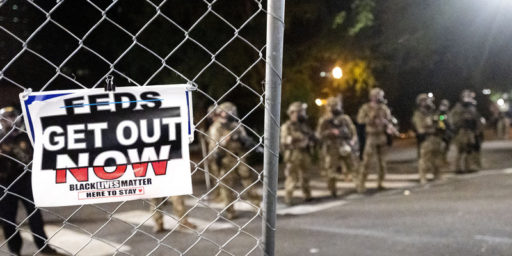CIA Alters Sensitive Information Policy
WaPo: CIA Alters Policy After Iraq Lapses
The CIA is making changes in how it handles intelligence after identifying specific problems in its disputed prewar assessment that Iraq’s Saddam Hussein possessed weapons of mass destruction, officials said yesterday.
CIA Director George J. Tenet, whose agency’s performance is under intense scrutiny, has ordered an end to the long-standing practice of withholding from analysts details about the clandestine agents who provide the information that analysts must evaluate, officials said.
The changes were ordered after an internal CIA review revealed several occasions when CIA analysts mistakenly believed that Iraq weapons data had been confirmed by multiple sources, when in fact it had come from a single source, Jami A. Miscik, deputy director for intelligence, said in a speech yesterday to the agency’s analysts. The misunderstanding arose because CIA operatives had given analysts ambiguous information.
***
Under the CIA’s current system, analysts are told about the reliability of the source but get no other information, such as an explanation of the person’s access to the information that he or she is providing. That is designed to protect agents’ identities, but also has roots in a bureaucratic divide between the Directorate of Operations and the Directorate of Intelligence, the analytical side of the agency.
***
Miscik didn’t specify what prewar information is now considered questionable, or what CIA weapons judgments might have been influenced by the data.
Analysts have long felt they needed to know more about sources of information — not their names but rather whether they have first-hand, or less-direct, access to the information they are presenting, officials said.
“This is something the analysts have sought for years and have never been able to get,” said one former senior agency analyst.
Miscik said analysts working on Iraq were sometimes misled into thinking more than one agent was involved because reports would describe a single source more than once and would use different descriptions each time.
In cases where analysts didn’t realize they were looking at information from unproven sources, Miscik said, the spare information in the reports gave them no way of knowing.
The old system was clearly flawed. I’m not sure this doesn’t go too far, though. Protecting the identities of sensitive sources is paramount; not only continued access to their information but their very lives are at stake. If the situation described in the story is accurate–and I have no reason to believe otherwise–then the problem would appear to be sloppy–or deceptive–descriptions of the sources. Indeed, why they’re not simply creating code names for them and referring to them in that manner escapes me.
Update: A former CIA senior official informs me that these changes are essentially “cosmetic” and wll have little impact on improving the situation. And he assures me that nothing being done here will compromise the sources; they’re merely “tightening up the language associated with such descriptions, rather than providing for more informative descriptions.”





This seems fairly big. (your correspondent not withstanding)
Why not assign every source a code name or a number? It would give people a tracking system while keeping thing anonymous and it would also add a layer of “single blindedish.”
I asked him that. He said the ops side has always done that and that the codes would be meaningless to analysts–and that they don’t want to know WHO the source is, just “whether the information is coming from a reliable source with access to the information and whether this source has reported reliably in the past.” Info they’ve been getting since the 1960s.
—